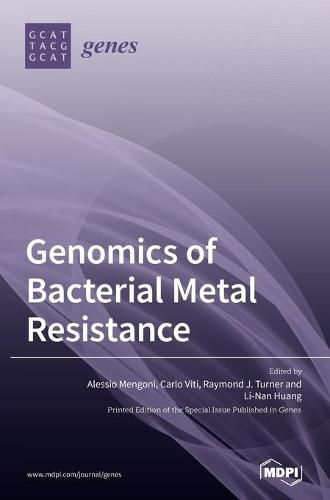Readings Newsletter
Become a Readings Member to make your shopping experience even easier.
Sign in or sign up for free!
You’re not far away from qualifying for FREE standard shipping within Australia
You’ve qualified for FREE standard shipping within Australia
The cart is loading…






This title is printed to order. This book may have been self-published. If so, we cannot guarantee the quality of the content. In the main most books will have gone through the editing process however some may not. We therefore suggest that you be aware of this before ordering this book. If in doubt check either the author or publisher’s details as we are unable to accept any returns unless they are faulty. Please contact us if you have any questions.
The importance of understanding metal-microbe interactions underlies a number of social-economic issues in the world. The antimicrobial resistance era has created a need for novel antimicrobials and within this fieldm metal and metalloid ions are promising solutions. Pollution sites, either co-contaminated with metals or with metals as the sole pollutant, contain microbes that are present as key participants, with both of these issues habing links to agriculture. Microbes also play key roles in the global geochemical cycle of many elements. Such statements solidify the need to understand metal-microbe interactions. Given that genomics has arguably become the most useful tool in biology, the application of this technology within the field of understanding metal resistance comes as no surprise. Whilst by no means comprehensive, this book provides examples of the applications of genomic approaches in the study of metal-microbe interactions. Here, we present a collection of manuscripts that highlights some present directions in the field. The book starts with a collection of three papers evaluating aspects of the genomics of the archetype metal resistant bacteria, Cuprividus metallidurans. This is followed by four studies that evaluate the mechanisms of metal resistance. The next two papers assess metal resistance in agricultural related situations, including a review on metal resistance in Listeria. The book concludes with a review on metal phytoremediation via Rhizobia and two subsequent studies of metal biotechnology relevance.
$9.00 standard shipping within Australia
FREE standard shipping within Australia for orders over $100.00
Express & International shipping calculated at checkout
This title is printed to order. This book may have been self-published. If so, we cannot guarantee the quality of the content. In the main most books will have gone through the editing process however some may not. We therefore suggest that you be aware of this before ordering this book. If in doubt check either the author or publisher’s details as we are unable to accept any returns unless they are faulty. Please contact us if you have any questions.
The importance of understanding metal-microbe interactions underlies a number of social-economic issues in the world. The antimicrobial resistance era has created a need for novel antimicrobials and within this fieldm metal and metalloid ions are promising solutions. Pollution sites, either co-contaminated with metals or with metals as the sole pollutant, contain microbes that are present as key participants, with both of these issues habing links to agriculture. Microbes also play key roles in the global geochemical cycle of many elements. Such statements solidify the need to understand metal-microbe interactions. Given that genomics has arguably become the most useful tool in biology, the application of this technology within the field of understanding metal resistance comes as no surprise. Whilst by no means comprehensive, this book provides examples of the applications of genomic approaches in the study of metal-microbe interactions. Here, we present a collection of manuscripts that highlights some present directions in the field. The book starts with a collection of three papers evaluating aspects of the genomics of the archetype metal resistant bacteria, Cuprividus metallidurans. This is followed by four studies that evaluate the mechanisms of metal resistance. The next two papers assess metal resistance in agricultural related situations, including a review on metal resistance in Listeria. The book concludes with a review on metal phytoremediation via Rhizobia and two subsequent studies of metal biotechnology relevance.